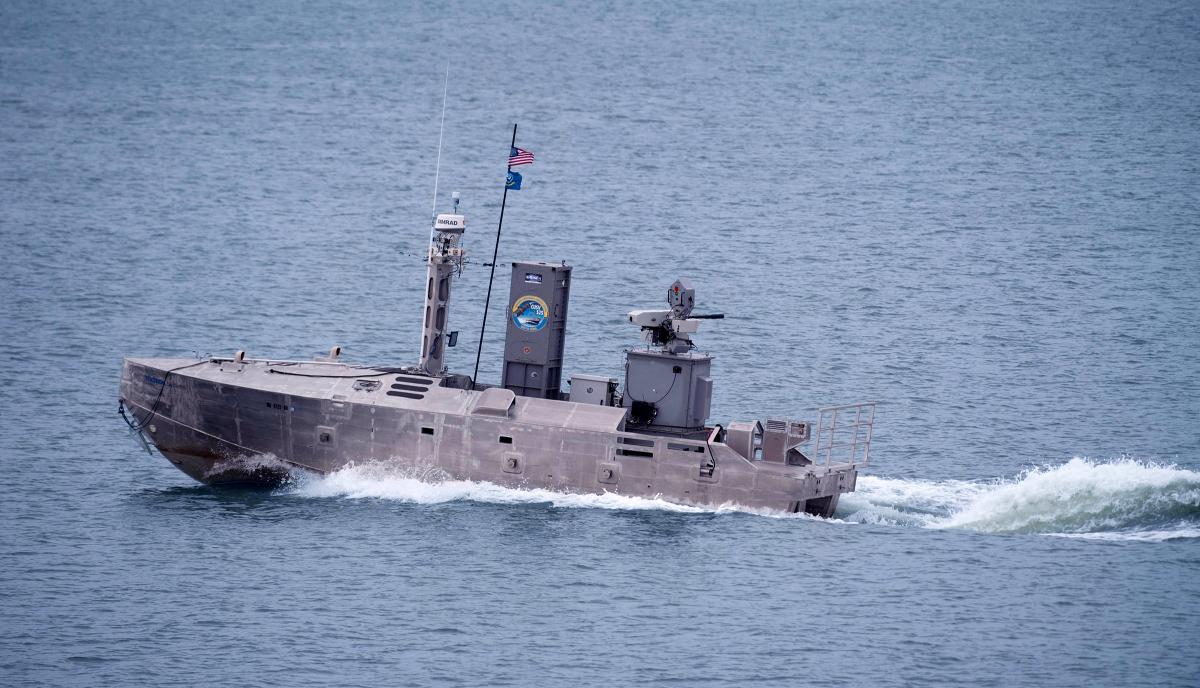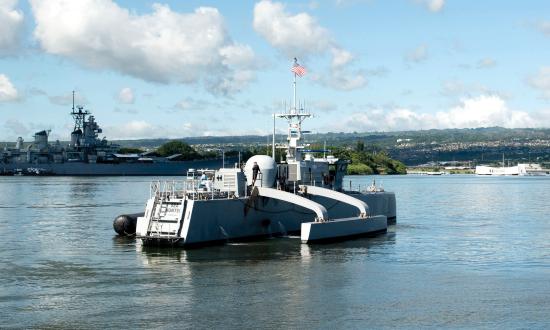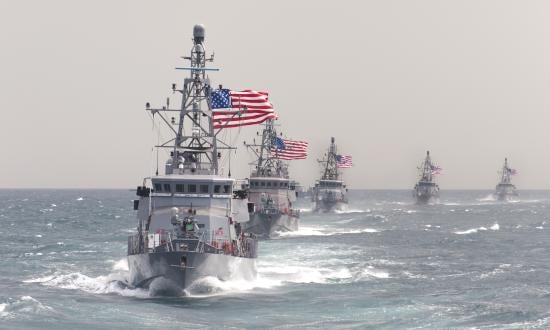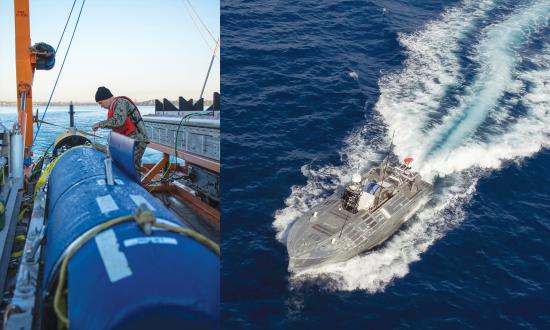Though development is ongoing, unmanned technology offers strategic and tactical promise in future conflicts. Similar to the role of aircraft engaged in suppression of enemy air defenses (SEAD) ahead of air strikes, “attritable” unmanned surface vessels (USVs) could play a key part in countering the antiaccess/area denial (A2/AD) threat, clearing a path for more conventional fleet components.
Meeting antiaccess challenges—especially in the South China Sea—is an active topic of discussion, and “killing the archer, not the arrow” will be key to countering A2/AD.1 USVs can help by scouting, providing their own strike capabilities, or using electronic warfare and decoys to degrade opponents’ command, control, computers, communications, intelligence, surveillance, and reconnaissance (C4ISR) systems through jamming or deception.
Antiship ballistic missiles’ reliance on extrinsic targeting capabilities (and their concomitant communication links) renders them susceptible to electronic warfare and thus vulnerable to being put out of action, highlighting a potential role for USV-based electronic warfare.2 While USVs with a range of capabilities could form the vanguard of a future fleet action, it is through electronic warfare in cooperation with more conventional assets (such as surface- and submarine-launched cruise missiles) that they could facilitate an effective first strike. This would reduce risk to vulnerable high-value assets such as carrier and expeditionary strike groups in subsequent operations.
Effective USV deployment must be part of a comprehensive response to the A2/AD problem. Similar to how SEAD facilitates air superiority by degrading and eliminating integrated air defense systems, USVs could provide a means for the fleet to achieve sea control and access for subsequent operations. USVs need not survive the entirety of the mission, only long enough to permit degradation or elimination of an A2/AD network. If USVs enable more capable manned units to strike antiaccess sites, they will have done their job, allowing better-armed assets to strike effectively first and enabling maximum delivered firepower by an attacking task force.3
The goal must be to increase the survivability of better-armed assets and the hit percentage of their weapons by disrupting enemy C4ISR. A willingness to sacrifice USVs in pursuit of the overall mission will be crucial to a successful counter-A2/AD effort. Loss of a USV is more palatable than loss of a manned unit, especially if it reduces risk for those manned units. In addition, fielding USVs in sufficient numbers will make it more difficult for an opponent to disrupt a counter-A2/AD operation, increasing the potential to achieve mission objectives and, ultimately, overall campaign goals.
Using USVs in counter-A2/AD operations will require developments in technology, tactics, and doctrine. For example, on the technology side, sophisticated electronic warfare assets may be impractical for USV deployment because of their power requirements or cost, but a simpler tool such as Raytheon’s Miniature Air Launched Decoy–Jammer (MALD-J) could offer a solution, if modified for surface launch capability.4
USVs also would need to be hardened to opponents’ own attempts to disrupt command and control. Experience from SEAD could provide a framework for developing a USV-based counter-A2/AD mission. Preparation today will lay the foundation for success in tomorrow’s high-end antiaccess fight.
1. Dave Majumdar, “How the U.S. Navy Is Trying to Make China’s ‘Carrier-Killer’ Missiles Obsolete,” The National Interest, 16 December 2016; and Charles L. Roe, “The NATO Seasparrow Surface Missile System,” Johns Hopkins APL Technical Digest 12 (1991): 318–22.
2. Andrew S. Erickson, “Chinese Anti-Ship Ballistic Missile Development and Counter-intervention Efforts,” Testimony before Hearing on China’s Advanced Weapons Panel I: China’s Hypersonic and Maneuverable Re-Entry Vehicle Programs, U.S.-China Economic and Security Review Commission, Washington, DC, 23 February 2017.
3. CAPT Wayne P. Hughes and ADM Robert P. Girrier, USN (Ret.), Fleet Tactics and Naval Operations, 3rd ed. (Annapolis, MD: Naval Institute Press, 2018), 159.
4. “Raytheon and U.S. Navy Begin MALD-J Super Hornet Integration"






